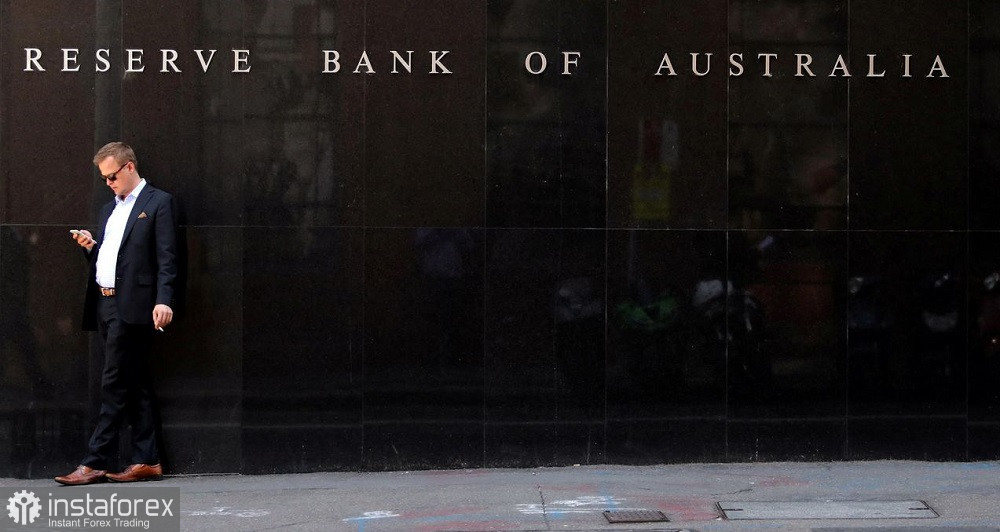Firstly, the minutes of the Reserve Bank of Australia's September meeting, published during Tuesday's Asian session, turned out to be more hawkish than expected. The second reason for the bullish correction was the greenback's weakness. The US Dollar Index retreated from the 105 level and sharply fell ahead of the announcement of the results of the September FOMC meeting. Thanks to the combination of these fundamental factors, the pair reached a two-week price high, touching the 0.6478 mark.

Take note that the Australian dollar has managed to hold its ground recently due to several fundamental factors. Notable support came from the labor market and China, among others. Last week, relatively positive data was published regarding Australia's labor market. For instance, the unemployment rate remained at 3.7% in August, against forecasts of an increase to 3.9%. Since November 2022, this indicator has fluctuated in the range of 3.5% to 3.7%, so the August result was within the normal range. The employment growth figure also landed in the "green zone," reflecting an increase of nearly 65,000 jobs, compared to an expected increase of just 26,000. The proportion of the economically active population increased to 67.0%, which is the best result in the entire history of such observations.
The labor report was on the aussie's side, making it possible for the bulls to take the initiative and pull the pair out of the 63-level.
China, which has been delivering mostly worrisome news lately, unexpectedly brought some positive surprises. After a series of disappointing reports, there was growth in certain indicators. For instance, retail sales in China increased by 4.6% YoY in August (compared to an expected growth of 3.0%), and industrial production grew by 4.5% YoY (compared to an expected growth of 3.9%). Additional measures by China to support its national economy also contributed to an increase in risk sentiment in the markets.
It's worth noting that following the September RBA meeting, the Australian central bank pointed out increased uncertainty regarding the Chinese economy, considering it as a factor "affecting the forecast for Australian economic growth." In this context, the aforementioned Chinese reports were on the aussie's side.
The minutes from the latest RBA meeting contributes to the fundamental picture for the AUD/USD pair. The central bank mentioned that they discussed two scenarios: 1) raising the rate by 25 basis points, and 2) keeping the rate unchanged. Ultimately, the majority of RBA officials agreed with the arguments in favor of maintaining the status quo. It is stated that these arguments "carried more weight as the latest data did not have a significant impact on the economic outlook."
RBA board members were split in previous decisions but they seemed to have been on an equal footing in this meeting. This should be considered in the context of another formulation in the accompanying statement – that in the future, "some further tightening" may be required if inflation turns out to be "more sustained than expected earlier." Furthermore, the central bank also took note of one unsettling fact – the cost of fuel sharply increased in August, "and this fact may lead to an increase in core inflation in the third quarter."
Such verbal signals indicate that the RBA may resort to an additional round of monetary tightening at one of the upcoming meetings. In particular, according to currency strategists at Commerzbank, if inflation unexpectedly accelerates in August, then another rate hike in October or November "will not be so unlikely" (referring to inflation data that will be published at the end of September).
As it is known, the September meeting was the last under the leadership of former RBA Governor Philip Lowe. The October meeting will be held under the chairmanship of Michelle Bullock, who has repeatedly complained about the high level of inflation in recent weeks. She also said that the central bank may need to raise rates again, "but for now, the central bank is closely monitoring the data."
Thus, the corrective rise in AUD/USD is quite justified, especially amid a weaker greenback, which cannot find a point of support ahead of the Federal Reserve meeting. The nearest resistance level is located at 0.6500, which is the upper Bollinger Bands line on the daily chart. If the Fed is not on the US dollar's side, not only can buyers overcome this target but also test the next price barrier at 0.6580 (the lower band of the Kumo cloud on the same timeframe). However, if the Fed takes a more hawkish position relative to the expectations of most traders (such a scenario is not excluded), then the pair will return to the range of 0.6350-0.6420 (the lower Bollinger Bands line - the Tenkan-sen line on the same timeframe). Given such a development, it is currently advisable to adopt a wait-and-see position on the pair.
 English
English 
 Русский
Русский Bahasa Indonesia
Bahasa Indonesia Bahasa Malay
Bahasa Malay ไทย
ไทย Español
Español Deutsch
Deutsch Български
Български Français
Français Tiếng Việt
Tiếng Việt 中文
中文 বাংলা
বাংলা हिन्दी
हिन्दी Čeština
Čeština Українська
Українська Română
Română

